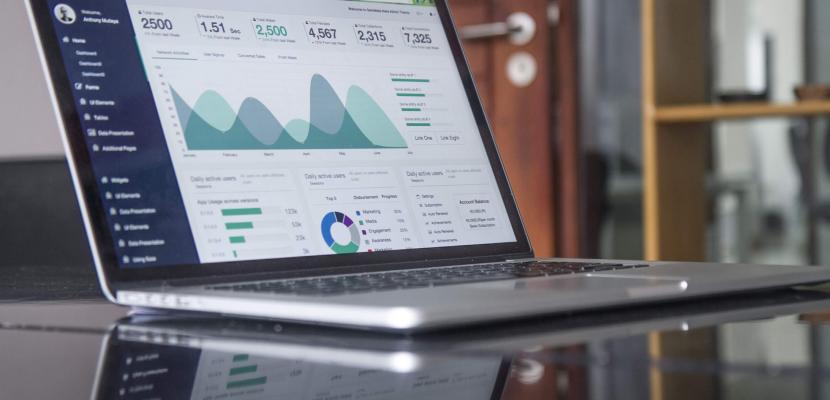Image

Andalusian Phytosanitary Information and Alert Network (RAIF)
Published on 13 March 2020

Spain
This is the good practice's implementation level. It can be national, regional or local.
About this good practice
Andalusia region is divided into BIOLOGICAL AREAS for each of the crops that are currently reported: areas in which, due to their agroecological characteristics, there are similar pest and crops behavior, and therefore homogeneous and more or less reliable information can be given for that whole area.
All the information is free and available through the website of the Andalusia Regional Ministry of Agriculture, Livestock, Fisheries and Sustainable Development.
The Andalusian Phytosanitary Information and Alert Network (hereinafter RAIF) is a pioneering idea in open data in Spain launched for the first time in Andalusia in 1996.
Currently the RAIF shows information on the phytosanitary situation of the following crops: garlic, cotton, almond, rice, winter cereals, citrus, strawberry, red fruits, horticultural protected, olive, potato, sugar beet, tomato for industrial processing, vine and carrot.
How does the RAIF work? The data comes from different sources: the technicians of the Working Groups for Integrated Treatments in Agriculture (ATRIAS); the Integrated Production Groups (APIs); and the field technicians (more than 700) located in each Andalusian province.
The data received are processed to provide phytosanitary information of interest to farmers and technicians.
All data is also available on the regional government open data portal.
Example of its application: the creation of predictive models on the evolution of pests using artificial intelligence techniques
All the information is free and available through the website of the Andalusia Regional Ministry of Agriculture, Livestock, Fisheries and Sustainable Development.
The Andalusian Phytosanitary Information and Alert Network (hereinafter RAIF) is a pioneering idea in open data in Spain launched for the first time in Andalusia in 1996.
Currently the RAIF shows information on the phytosanitary situation of the following crops: garlic, cotton, almond, rice, winter cereals, citrus, strawberry, red fruits, horticultural protected, olive, potato, sugar beet, tomato for industrial processing, vine and carrot.
How does the RAIF work? The data comes from different sources: the technicians of the Working Groups for Integrated Treatments in Agriculture (ATRIAS); the Integrated Production Groups (APIs); and the field technicians (more than 700) located in each Andalusian province.
The data received are processed to provide phytosanitary information of interest to farmers and technicians.
All data is also available on the regional government open data portal.
Example of its application: the creation of predictive models on the evolution of pests using artificial intelligence techniques
Resources needed
Regional government, Cooperatives, Farmers, support companies in the sector, knowledge and research centers.
ERDF and own resources of the Andalusia Regional Ministry of Agriculture, Livestock, Fisheries and Sustainable Development
Its cost reached around 850.000€ in years 2018 y 2019 per year.
ERDF and own resources of the Andalusia Regional Ministry of Agriculture, Livestock, Fisheries and Sustainable Development
Its cost reached around 850.000€ in years 2018 y 2019 per year.
Evidence of success
Having information and an additional tool to manage the principles of integrated pest management.
From these data, predictive models have been developed enabling the prevention of pests, such as the predictive model of the olive fly.
Sustainable use of phytosanitary products by reducing risks and their effects on human health and the environment.
Having a dissemination tool based on new technologies, supported by social networks, newsletter, etc. to disseminate information on pests.
From these data, predictive models have been developed enabling the prevention of pests, such as the predictive model of the olive fly.
Sustainable use of phytosanitary products by reducing risks and their effects on human health and the environment.
Having a dissemination tool based on new technologies, supported by social networks, newsletter, etc. to disseminate information on pests.
Potential for learning or transfer
RAIF is a multichannel regional platform to inform about plant health (web, social media, GIS, app). It’s use as a tool to collect and manage data enables the use of big data and artificial intelligence. It’s functionalities can be easily transferred to other European regional authority.
Potential for transfer:
-Having information at regional level and an additional tool to manage the principles of integrated pest management.
-Achieving sustainable use of phytosanitary products by reducing risks and their effects on human health and environment.
-Having a regional dissemination tool based on new technologies, supported by social networks, newsletter, etc. to disseminate information on pests.
-Sharing data with more agents is key to generate value in agrifood value chain, save costs and be more effective specially in the process of decision making related to integrated pest management (IPM).
-Public-private collaboration is fundamental when dealing with phytosanitary information.
Potential for transfer:
-Having information at regional level and an additional tool to manage the principles of integrated pest management.
-Achieving sustainable use of phytosanitary products by reducing risks and their effects on human health and environment.
-Having a regional dissemination tool based on new technologies, supported by social networks, newsletter, etc. to disseminate information on pests.
-Sharing data with more agents is key to generate value in agrifood value chain, save costs and be more effective specially in the process of decision making related to integrated pest management (IPM).
-Public-private collaboration is fundamental when dealing with phytosanitary information.
Further information
Website
Good practice owner
You can contact the good practice owner below for more detailed information.
Organisation
Regional Government of Andalucia

Spain
Andalucía
Contact
Technical advisor
